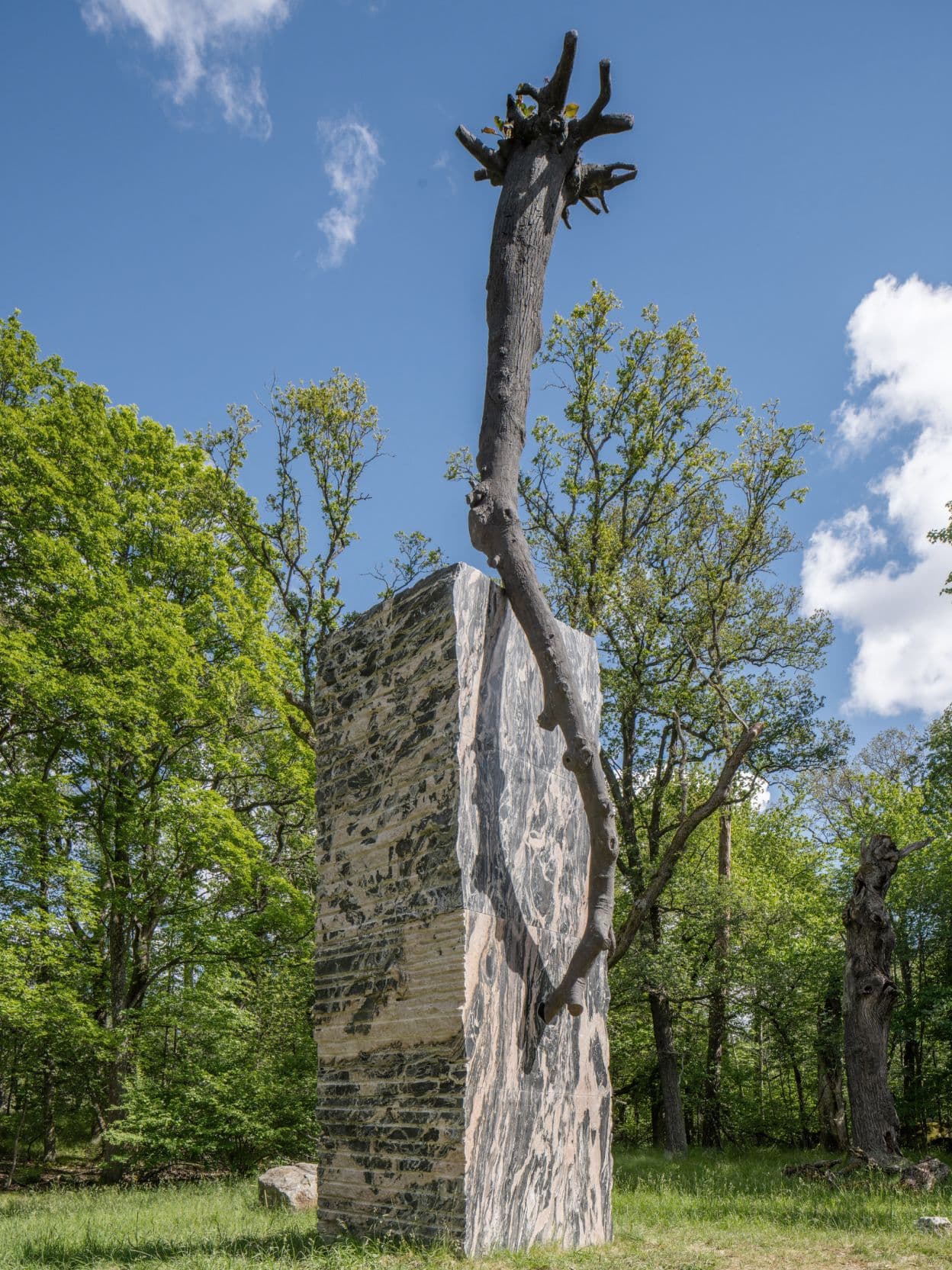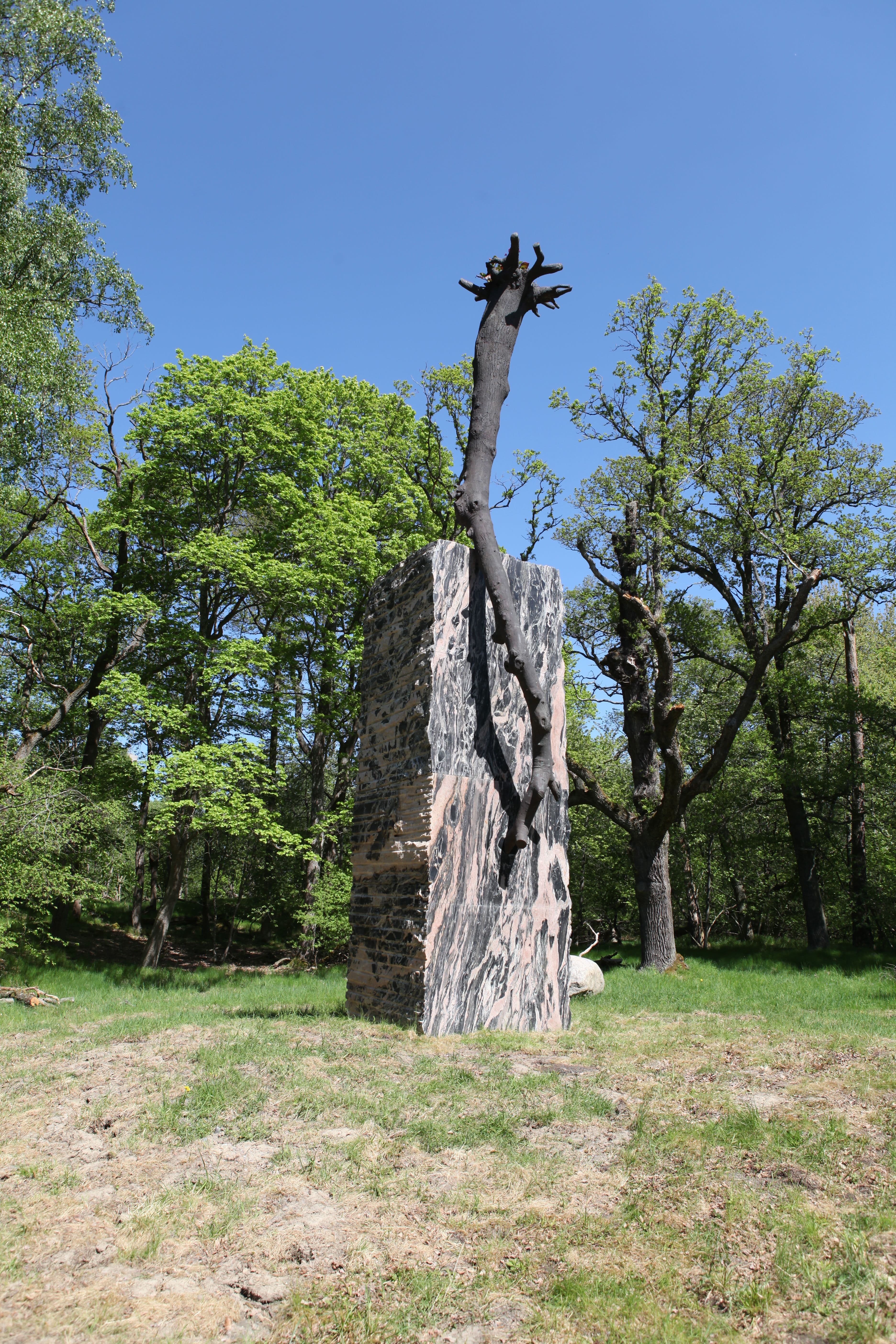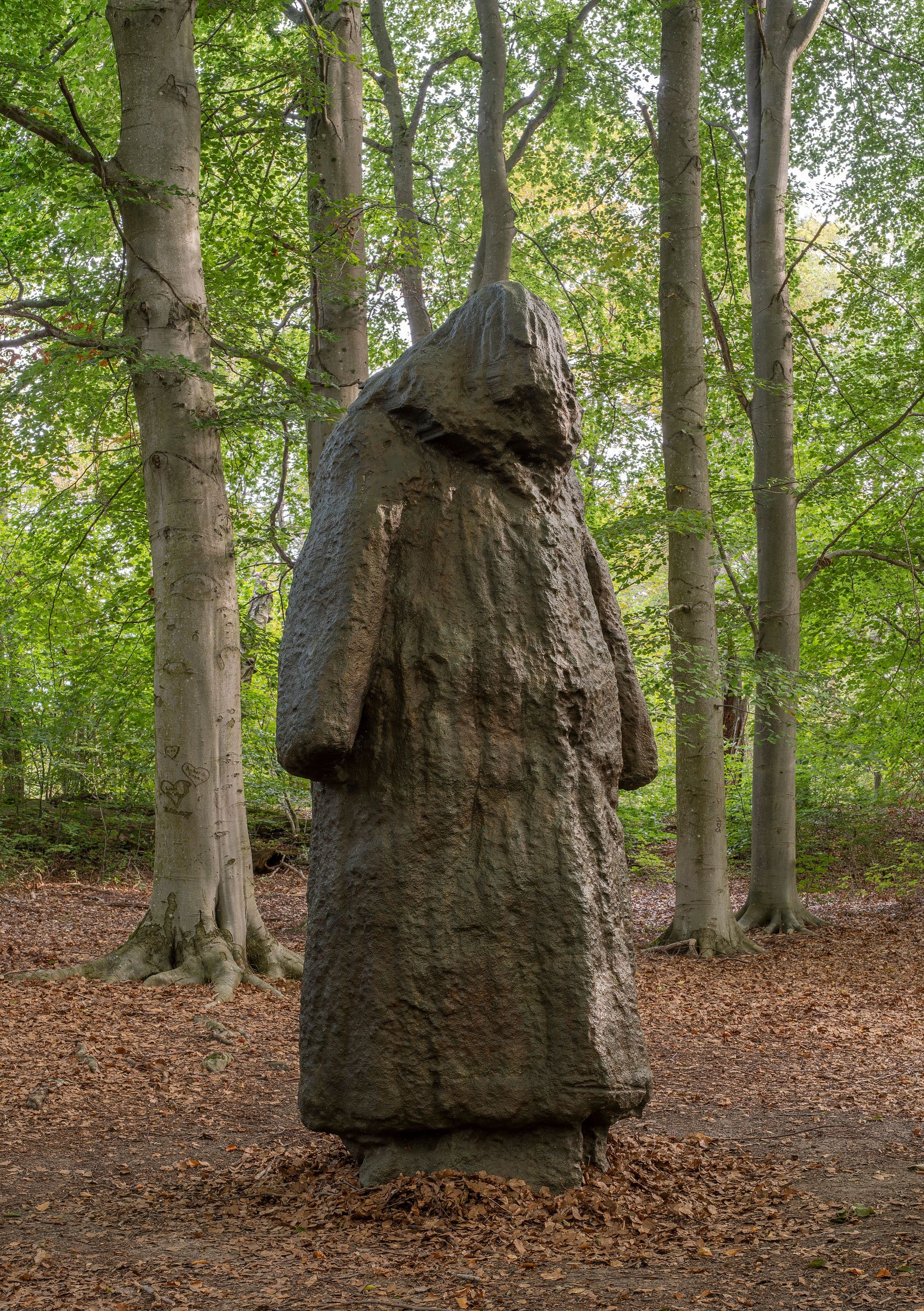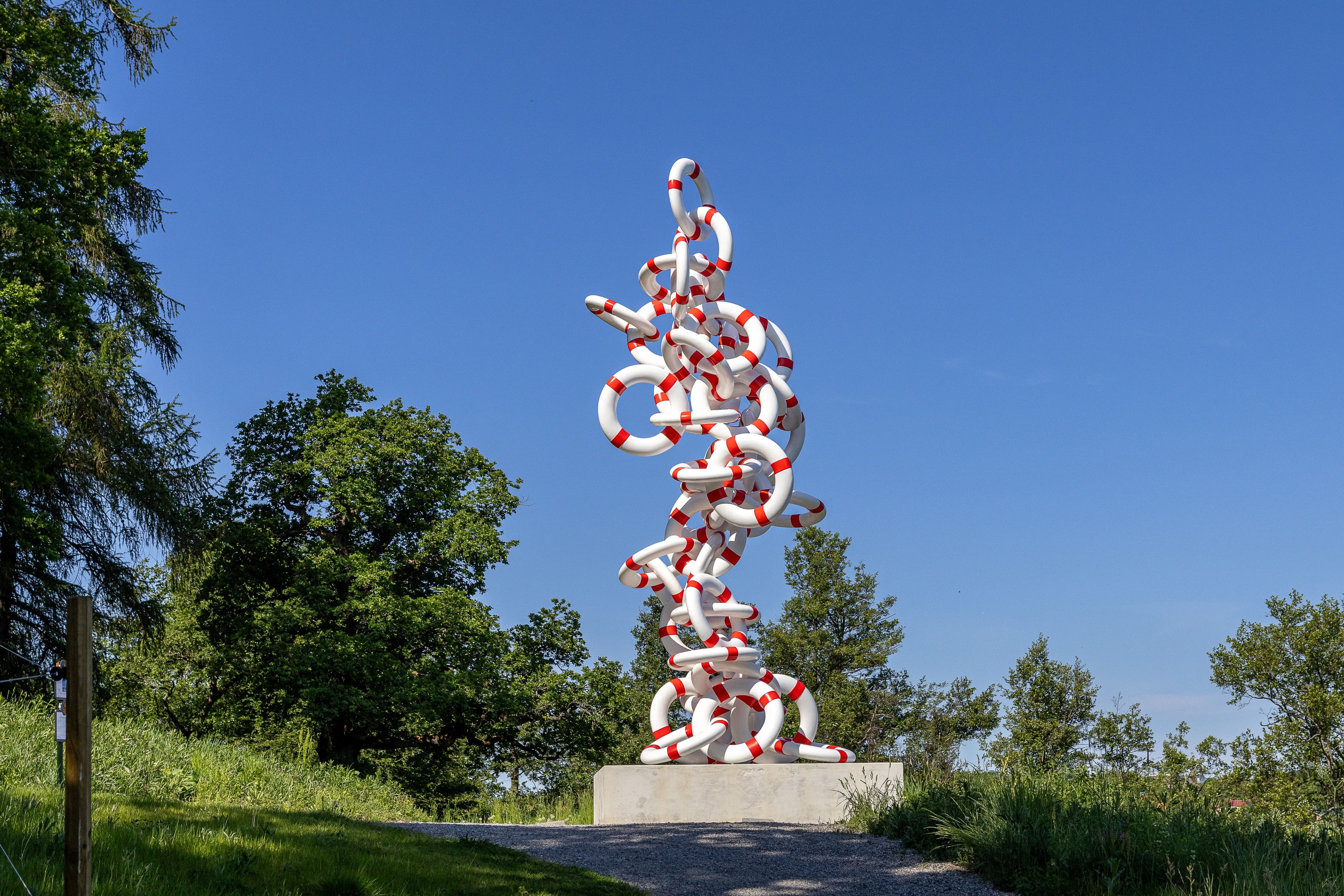
Giuseppe Penone
The Inner Flow of Life, 2024
Giuseppe Penone began his career within the Arte Povera movement and is one of the most important sculptors living today. His work The Inner Flow of Life measures 10 metres tall and weighs over 60 ton...
About the Sculpture Park
The Princess Estelle Cultural Foundation is establishing the Princess Estelle Sculpture Park on Royal Djurgården.

The idea for the sculpture project at Royal Djurgården was born when the Crown Princess Couple were patrons of Umeå, the European Capital of Culture in 2014. A visit to the Umedalen Sculpture Park sparked the idea of creating something similar in Stockholm. In 2016–2018, outdoor sculpture exhibitions featuring Tony Cragg, Eva Hild and Jaume Plensa were organised by a private gallery
in collaboration with the Royal Djurgården Administration.
From 2020, the project is managed by the Princess Estelle Cultural Foundation was created in 2019. The initial mission is to establish a permanent sculpture park in the Rosendal area, and in conjunction with new acquisitions offer cultural activities and educational programmes to spark curiosity and offer knowledge about art. The Foundation is committed to encouraging interest in contemporary art and enhancing Sweden’s cultural standing globally


Royal Djurgården, the largest green area of central Stockholm, has been royal property since 1452. Initially a royal farm and hunting park, it developed in the 19th and 20th centuries into a royal pleasure park and the city’s main recreation area. Today, the park spans a total of 1000 hectares and it is the largest tourist destination in northern Europe with about 15 million visitors annually. Since 1995, Djurgården is a protected area as part of the world’s first National City Park. In addition to wild nature and a planned park, the area includes everything from restaurants and cafés, to an amusement park and museums, hundreds of cultural monuments, and a royal palace – Rosendal.
Rosendal is located in the middle of South Djurgården, the island that makes up a third of Royal Djurgården. In this scenic landscape, a country estate was built already in the 18th century. The new crown prince and future king, Karl XIV Johan, fell in love with the place and acquired the property already in 1817. The following year, as the new king and the first of the Bernadotte dynasty, he built his own pleasure palace here and around it a park, which was further developed by his successor. The park was refined and expanded, and within its precincts, land was given to the Swedish Horticultural Society, with large cultivations and greenhouses, as well as the country’s first gardening training.
From the onset, the new king wanted to open up his new property to the public. Fences were torn down, walkways were built and park benches were installed. The palace and pleasure park became a place where the new dynasty established a connection with the people. The centre of Djurgården that gradually strengthened its position as the city’s main excursion destination. Rosendal became a model facility of its own – the small palace was the first Swedish interpretation of the austere classicism of the early 19th century, which came to be known as Karl Johan style. The park, with its soft adaptation to the landscape and its ambition to include a slightly chastened nature, became characteristic of its time. The landscaped parts transitioned nearly seamlessly into the wild.
Art became an important part of the place, not only through the typical architecture, interpreted by one of the prominent architects of the period, but also through the numerous elements of public art in the park. Sculpture is represented through the park mainly in works in a neoclassical style in a smaller format, with the exception of a colossal and iconic vase from the King's porphyry mill. It became a symbol of Rosendal and attracted many visitors to the site. The park’s thoughtfully planned views and sight lines were often reinforced with a work of art.
Around 1830 another large project was initiated at Rosendal. Karl XIV Johan wanted to build a magnificent art museum on the site. Blueprints were drawn, ground work was started and marble columns were delivered. Only after the decision to build Nationalmuseum, the plans were abandoned. Some of the columns today adorn the entrance to the park at the Djurgården Bridge.
The unique qualities of the facility and the aesthetic ambitions expressed by the young dynasty, transformed the Rosendal Palace from a royal pleasure palace into a museum about Karl XIV Johan and the style named after him already in 1913. The palace with its surrounding park was classified a listed building in 1935.
As the popularity of the Royal Djurgården grew, so did the park’s greenery. The beautiful facility in the middle of South Djurgården fell over time into a slumber. View and walkways overgrew and gradually disappeared. Flowerbeds became smaller and the untamed forest pressed on. The original vision vanished among the leaves.
In the lead up to the 200th anniversary of the Bernadotte dynasty in 2018, thoughts of a rebirth were awakened – Rosendal Redeviva. Wouldn’t it be possible to reestablish the original garden and at the same time reshape it to suit today's visitors?
An extensive detective work began. With the help of traditional archival studies and hands-on garden archaeology, combined with modern methods such as laser scanning and ground radar, the hunt for the lost pleasure gardens was undertaken. Gradually the image of the early 19th century park emerged. During the same period, the Bernadotte walking path was inaugurated and a new bridge was built in the place where Karl XIV Johan once had a floating bridge. The area was now linked to its surroundings and new patterns of movement were established. Simultaneously, the work to recreate the original park began, with focus on its natural and cultural values.
Another important part of the work to invigorate Rosendal was the royal art initiative. Starting in the summer of 2016, the area was filled with public art in large format. The idea was to let artworks by internationally renowned artists, to interact with the unique qualities of the palace park. The success was instantaneous and more exhibitions followed the first. Encouraged by the appreciation of visitors and critics, the Crown Princess couple raised the idea of a permanent sculpture exhibition in the palace park. In 2019, Princess Estelle Cultural Foundation was founded which, in addition to arranging another appreciated summer exhibition in 2020, acquired a permanent work for the park. Another royal piece of the puzzle was added to the large puzzle Rosendal.
Magnus Andersson 2021-03-23

Giuseppe Penone
Giuseppe Penone began his career within the Arte Povera movement and is one of the most important sculptors living today. His work The Inner Flow of Life measures 10 metres tall and weighs over 60 ton...

Charlotte Gyllenhammar
Charlotte Gyllenhammar is known for her sculptures that take familiar motifs and imbue them with a quiet but emotionally charged atmosphere. Investigating intimate themes and social conceptions, she u...

Yinka Shonibare CBE
Yinka Shonibare CBE’s series of Wind Sculptures evolved from his artworks Vasa Ship from 2004 and Nelson’s Ship in a Bottle which was created in 2010 for the Fourth Plinth on Trafalgar Square. Changin...

Elmgreen & Dragset
Elmgreen & Dragset are known for sculptures that modify inconspicuous everyday objects, shifting the values associated with those items. In Life Rings, they have chosen the lifebuoy, a rescue device t...
© 2025 Prinsessan Estelles kulturstiftelse